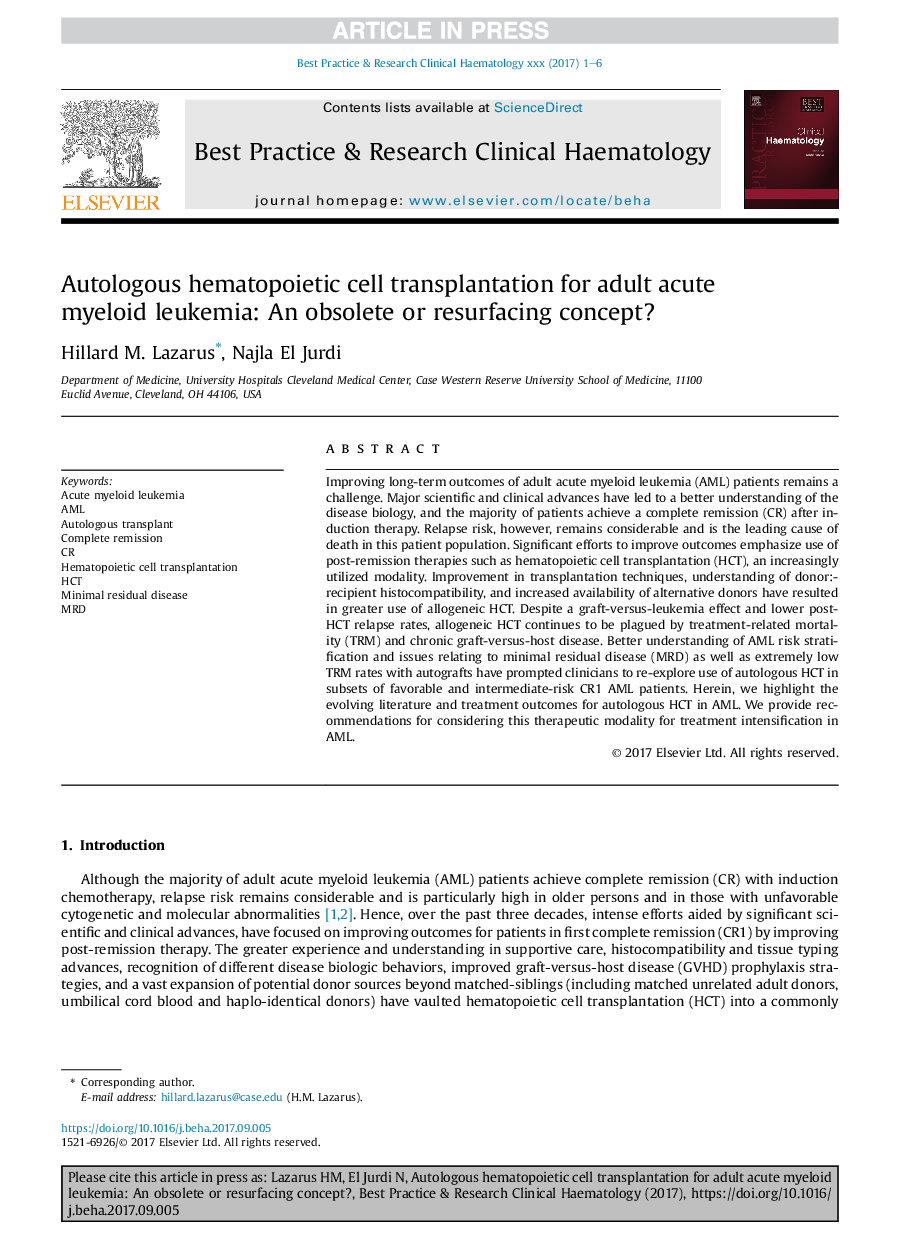| Article ID | Journal | Published Year | Pages | File Type |
|---|---|---|---|---|
| 8429123 | Best Practice & Research Clinical Haematology | 2017 | 6 Pages |
Abstract
Improving long-term outcomes of adult acute myeloid leukemia (AML) patients remains a challenge. Major scientific and clinical advances have led to a better understanding of the disease biology, and the majority of patients achieve a complete remission (CR) after induction therapy. Relapse risk, however, remains considerable and is the leading cause of death in this patient population. Significant efforts to improve outcomes emphasize use of post-remission therapies such as hematopoietic cell transplantation (HCT), an increasingly utilized modality. Improvement in transplantation techniques, understanding of donor:recipient histocompatibility, and increased availability of alternative donors have resulted in greater use of allogeneic HCT. Despite a graft-versus-leukemia effect and lower post-HCT relapse rates, allogeneic HCT continues to be plagued by treatment-related mortality (TRM) and chronic graft-versus-host disease. Better understanding of AML risk stratification and issues relating to minimal residual disease (MRD) as well as extremely low TRM rates with autografts have prompted clinicians to re-explore use of autologous HCT in subsets of favorable and intermediate-risk CR1 AML patients. Herein, we highlight the evolving literature and treatment outcomes for autologous HCT in AML. We provide recommendations for considering this therapeutic modality for treatment intensification in AML.
Keywords
Related Topics
Life Sciences
Biochemistry, Genetics and Molecular Biology
Cancer Research
Authors
Hillard M. Lazarus, Najla El Jurdi,
